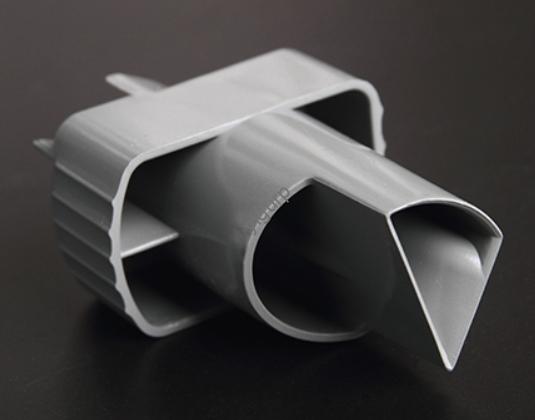If you’re a product designer or manufacturer looking to create accurate 3D printing handboards for new product development, Eine der ersten Fragen, die Sie stellen werden, ist: “What materials should I use?” Choosing the right material directly affects your handboard’s durability, Aussehen, and whether it matches your final product’s performance. Let’s break down the most common 3D printing handboard materials, ihre Verwendung, and how to pick the best one for your project.
Common 3D Printing Handboard Materials & Their Key Details
To make it easy for you to compare, we’ve organized the top materials into a clear table. Each entry includes the material name, suitable 3D printing technology, main advantages, and typical handboard applications.
| Materialtyp | Suitable 3D Printing Technology | Schlüsselvorteile | Typical Handboard Applications | Average Cost (Pro kg) |
| Technische Kunststoffe (ABS/PLA) | FDM (Modellierung der Ablagerung) | Niedrige Kosten, einfach zu drucken, gute Aufprallfestigkeit (ABS) | Prototypen für Verbraucherprodukte (Spielzeug, Haushaltswaren), structural test parts | \(20 – \)50 |
| Photopolymerharze | SLA (Stereolithikromographie)/DLP (Digitale Lichtverarbeitung) | Hohe Details, glatte Oberfläche, hohe Präzision | Hochvorbereitete Prototypen (elektronische Gehäuse, jewelry models), visual display handboards | \(80 – \)150 |
| Rubber-Like Materials | FDM/SLS (Selektives Lasersintern) | Flexibel, elastisch, good grip | Handboards for soft parts (Griffe, Dichtungen, Schuhsohlen) | \(60 – \)120 |
| Metallmaterialien (Titanium Alloy/Stainless Steel) | Slm (Selektives Laserschmelzen)/Sls | Hohe Stärke, Korrosionsbeständigkeit, Wärmewiderstand | Industrial part prototypes (Automobilkomponenten, Luft- und Raumfahrtteile), functional test handboards | \(300 – \)800 |
| Keramikmaterialien | SLA/SLS | Hochtemperaturwiderstand, hohe Präzision, Ästhetische Anziehungskraft | Artistic handboards, dental implant models, high-temperature test parts | \(150 – \)300 |
| Verbundwerkstoffe (Carbon Fiber-Reinforced Plastic) | FDM/SLS | Leicht, hohe Stärke, starr | High-performance handboards (Drohnenrahmen, sports equipment prototypes) | \(100 – \)250 |
| Lebensmittelmaterialien (Sugar/Chocolate) | Specialized Food 3D Printers | Edible, customizable shapes | Promotional handboards (food product samples, decorative cake toppers) | \(50 – \)100 |
| Gypsum Materials (Colored) | Bindemittel Jitting | Vibrant colors, leicht zu formen, niedrige Kosten | Visual display handboards (Skulpturen, Architekturmodelle) | \(30 – \)80 |
| Artificial Bone Powder | SLS/SLM | Biokompatibel, matches bone structure | Medical handboards (orthopedic implant prototypes, chirurgische Führer) | \(500 – \)1,200 |
How to Choose the Right Material for Your 3D Printing Handboard
Picking a material isn’t just about cost—it needs to fit your handboard’s purpose. Hier sind 4 key factors to consider, with simple questions to guide your decision:
1. What’s the Handboard’s Main Use?
- If it’s for visual display (Z.B., showing a product’s design to clients), Gehen Sie für Photopolymerharze (glatte Oberfläche) oder colored gypsum (lebendige Farben).
- If it’s for Funktionstests (Z.B., checking if a part can withstand pressure), wählen Technische Kunststoffe (ABS) oder Metallmaterialien (hohe Stärke).
- If it’s for medical or biocompatible needs (Z.B., orthopedic prototypes), artificial bone powder ist die oberste Wahl.
2. Was ist Ihr Budget??
- Budget-friendly options (under $50/kg): PLA (eine Art von technischer Kunststoff) and gypsum. Great for simple visual handboards.
- Mid-range options (\(50 – \)200/kg): ABS, rubber-like materials, und zusammengesetzte Materialien. Balanced for most testing and display needs.
- High-end options (over $200/kg): Metalle (Titanlegierung) and artificial bone powder. For industrial or medical-grade handboards.
3. Do You Need Special Properties?
- Flexibilität: Rubber-like materials are the only choice for handboards that need to bend (Z.B., a prototype of a phone case with a soft edge).
- Wärmewiderstand: Ceramic materials or stainless steel work best if your handboard will be exposed to high temperatures (Z.B., a prototype of a kitchen appliance part).
- Leicht & Stärke: Composite materials like carbon fiber-reinforced plastic are perfect for handboards that need to be strong but not heavy (Z.B., a drone frame prototype).
Yigu Technology’s View on 3D Printing Handboard Materials
Bei Yigu Technology, we believe that the right 3D printing handboard material is the bridge between design ideas and market-ready products. Based on our work with hundreds of manufacturing clients, Technische Kunststoffe (ABS/PLA) Und Photopolymerharze are the most versatile choices for most new product 研发 (R&D) projects—they balance cost, ease of printing, und Leistung. For industrial clients needing high-strength handboards, we recommend carbon fiber composites or stainless steel, as they replicate the durability of final parts. We also see growing demand for biocompatible materials like artificial bone powder in medical R&D, and we’re committed to offering these options to support innovative healthcare solutions.
FAQ
Q1: Can I use PLA for functional test handboards?
PLA is great for visual handboards, but it’s less durable than ABS. For light functional tests (Z.B., checking fit), it works. But for tests involving impact or heat, ABS or metal is better.
Q2: Are rubber-like materials suitable for long-term handboard use?
Rubber-like materials can degrade slightly over time (especially if exposed to sunlight), so they’re best for short-term handboards (Z.B., 1-3 Monate des Tests). Für längere Verwendung, consider adding a protective coating.
Q3: How much does a metal 3D printing handboard cost compared to a plastic one?
Durchschnittlich, a metal handboard costs 5-10 times more than a plastic one. Zum Beispiel, a small plastic handboard (100G) might cost \(5-\)10, while a similar metal handboard could cost \(50-\)100. The exact price depends on the metal type (titanium is more expensive than stainless steel) and handboard size.
